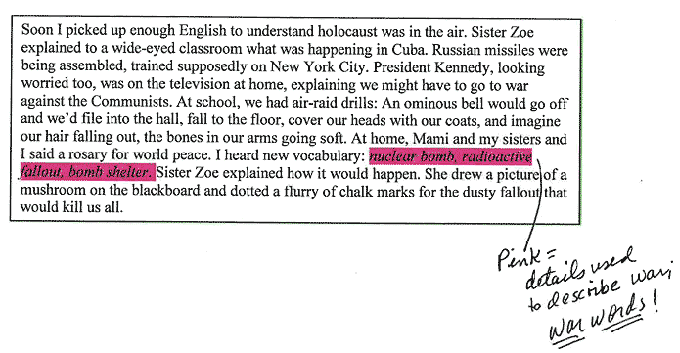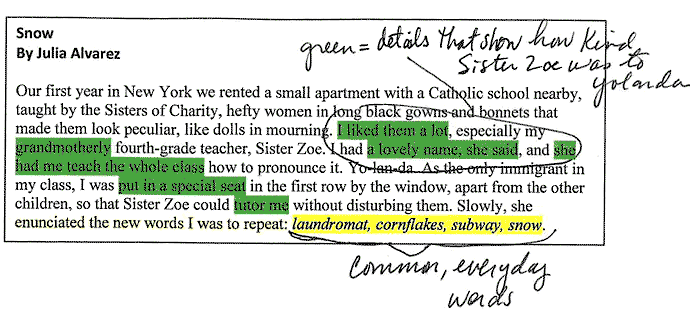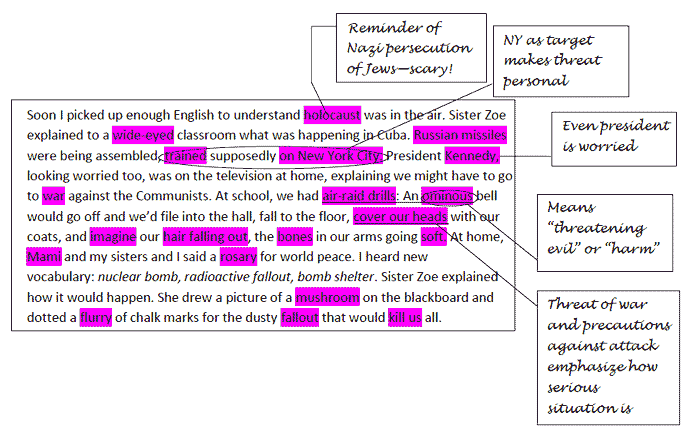
Source: your secret, LoneCamel, Flickr
The next step is adding meaningful marginal notations to your marked text. When you read “Snow,” you practiced using differently colored highlighters to draw your attention to significant word choices and details that reflect some of Yolanda’s first experiences in the United States.
You could have made a marginal notation near the words that were highlighted in yellow (laundromat, cornflakes, subway, snow) classifying them as “common, everyday words.” What kind of marginal notation could you make to help you remember why you highlighted words in pink (nuclear bomb, radioactive fallout, bomb shelter)? When you have an answer in mind, check your understanding to see how I classified these words.

For greater accessibility, download a pdf of the image.
Our marginal notations (“common, everyday words” and “words related to war”) remind us of that and help us to understand the story on a deeper level.
Now think about the words you highlighted in green in the previous sections (words used to show Sister Zoe’s kindness to Yolanda). What could you write in the margin to remember why you highlighted words in green? When you have an answer in mind, check your understanding to see what I wrote.

For greater accessibility, download a pdf of this image.
When you have finished highlighting the diction and details that convey danger, check your understanding to see a sample response. Also read the marginal notations in preparation for choosing some of your own in the last exercise.
In making my marginal notations, I tried to identify the author’s purpose or the effect on the reader. I focused on how Alvarez’s word choices and selection of details created a sense of danger and fear.
Match each statement below with a marginal notation that explains how the highlighted word choices and details create a sense of danger and fear. Choose your response for each question by clicking on one of the choices below.

Now you should be more comfortable having a “conversation” with a text. You have practiced annotating a text by highlighting, circling, and defining unfamiliar words. You even went a step further and learned how to add marginal notes.
Whether you’re reading a poem, short story, novel, or essay, being an active reader can help you overcome fatigue and remember what you read. Annotating can also help you read texts in your other classes. Give it a try. Your teachers and classmates will be impressed!
